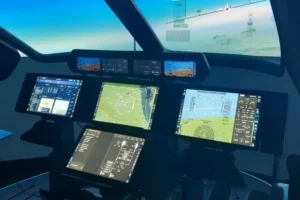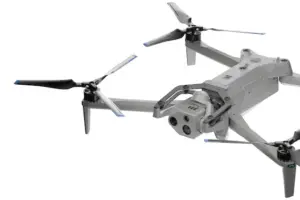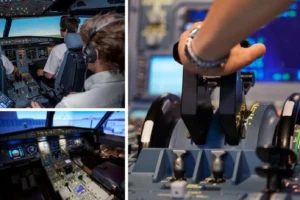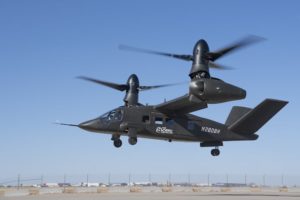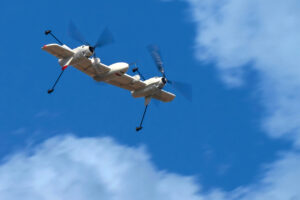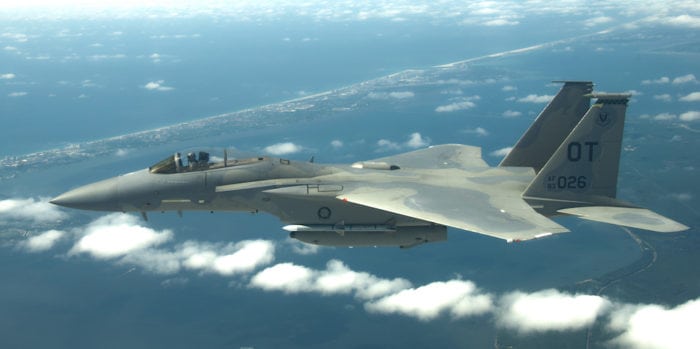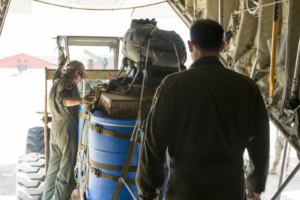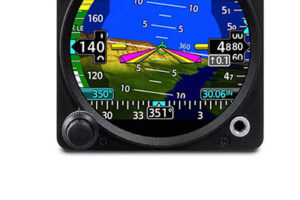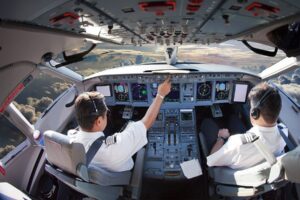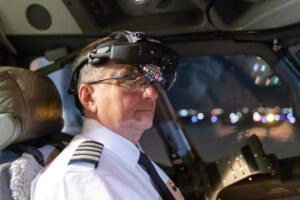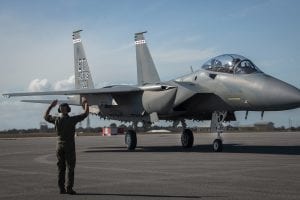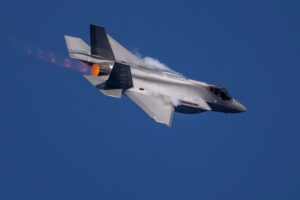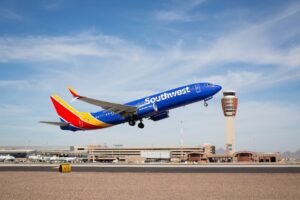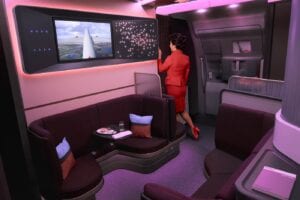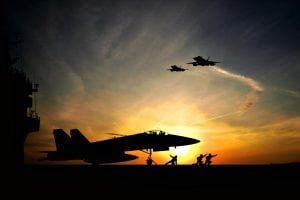PBN: More Than a Navigation Tool
By by Robert W. Moorman Robert W. Moorman is a freelance writer specializing in various facets of the fixed and rotor wing air transportation business | October 1, 2015
Send Feedback
Performance-Based Navigation (PBN) is the gift that keeps on giving. Not only is it a key element of the FAA’s Next Generation Air Transportation System (NextGen) modernization initiative, but it is also a friend of the environment and cost-averse airlines. The two primary components of PBN — Area Navigation (RNAV) and the more advanced Required Navigation Performance (RNP), which includes onboard performance-monitoring and alerting capabilities — are being implemented at various airports throughout the United States to better manage inbound and outbound air traffic.
More than 7,000 PBN procedures have been published in the United States through the FAA’s metroplex initiative. The goal of these metroplex projects is to create a more efficient use of airspace with better arrival and departure flows. The FAA has implemented scores of new satellite-based PBN procedures in the Denver, Houston, North Texas, Washington, D.C., and Northern and Southern California areas, among others.
“In the United States, the most advanced implementation of PBN-RNP is in Denver, Colo.,” claims Andy McDowell, director of global business and program capture for all airspace programs within Boeing and Jeppesen. The Denver Metroplex uses PBN-RNP for independent, widely spaced parallel operations. “It is the only airport doing that in the United States today,” said McDowell. “That is why we think of Denver as the most advanced application of RNP.”
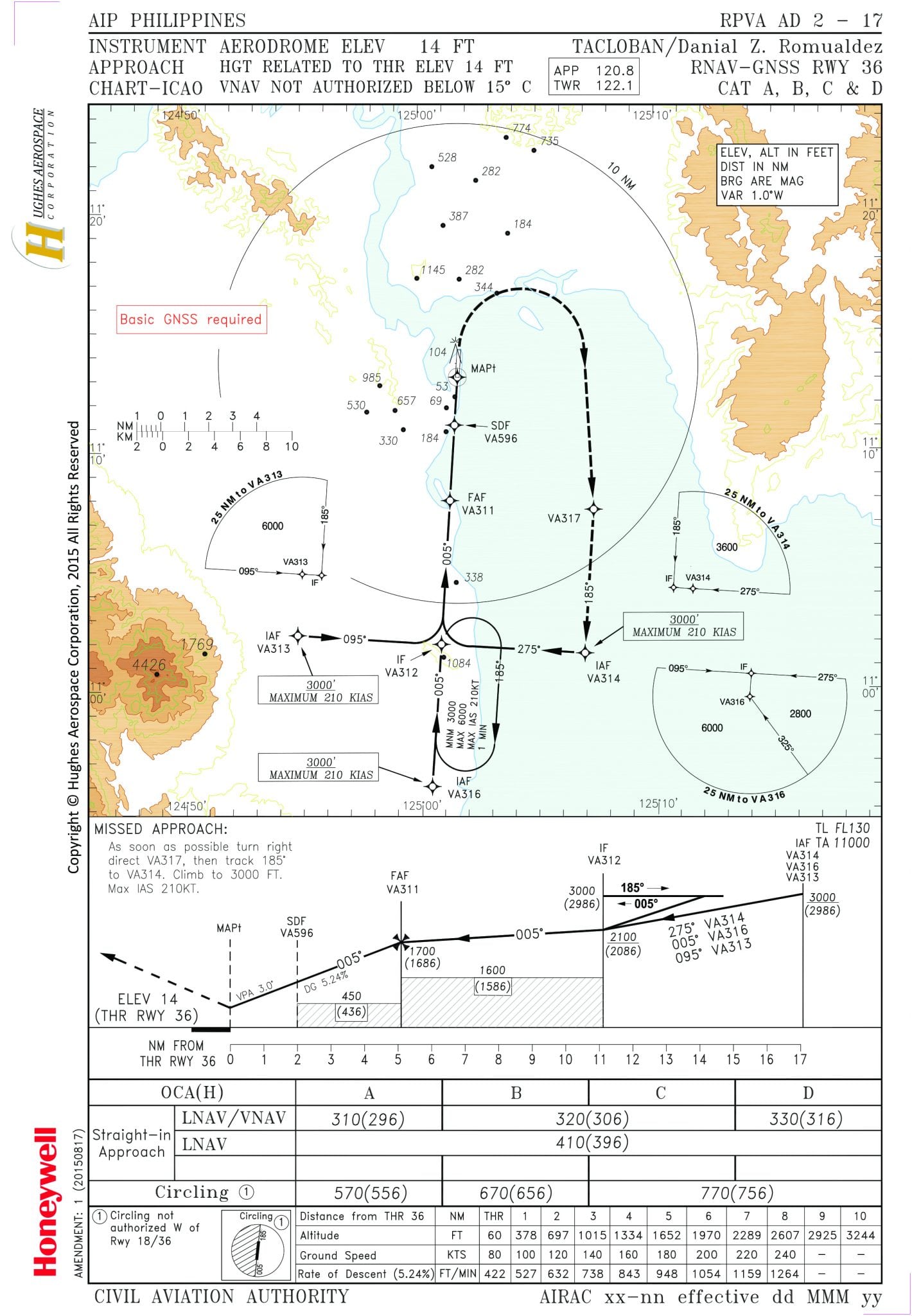 |
| GNSS Instrument Approach into Tacloban, Philippines. RNAV Procedure developed by Hughes and Honeywell. Photo: Hughes Aerospace. |
The North Texas Metroplex is now operational with 80 new PBN procedures for arrival, approach and departure. In Houston alone, results show that 60 new PBN procedures implemented in the surrounding airspace save users $6 million annually in fuel consumption, according to the FAA, which means fewer CO2 emissions as well. Based on airline-filed flight plans, the FAA estimates that aircraft in Houston will fly 648,000 fewer nautical miles annually as a result of PBN procedures.
Houston has around 20 new RNAV Standard Terminal Arrival Routes (STAR) and a half dozen Standard Instrument Departures (SIDS) as well as a ground-based Global Navigation Satellite System (GNSS) in place, according to the FAA.
The Charlotte, North Carolina Metroplex will implement 39 new PBN procedures between August 2015 and January 2017. Around 30 new PBN procedures in the Atlanta, Ga. metroplex will be implemented between February and September 2016. “We now have more satellite-based procedures in our skies nationwide than radar-based procedures,” says FAA Administrator Michael Huerta. “That would have been hard to imagine just a few years ago.” System-wide, the FAA measured $1.6 billion in benefits to airlines and the traveling public from PBN and other NextGen capabilities. “Over the next 15 years, we estimate that these changes alone will produce an additional $11.4 billion in benefits,” Huerta adds.
PBN-RNP/RNAV procedures provide additional benefits in various forms of flight. STARs can reduce miles flown in Terminal Radar Approach Control (TRACON) airspace and reduce controller/aircraft communications and interaction between the dependent flows in multiplex airspace while increasing predictability of operations.
Outside of the United States, the greatest levels of RNP-implementation is occurring in Australia, New Zealand, China and Canada, according to a Jeppesen industry analysis.
Canada’s Constant Descent Final Approach (CDFA) testing program, which includes RNAV/RNP procedures, is designed to eliminate the cumbersome and costly step-down approaches aircraft are currently making to an airport. NavCanada, a non-profit company created in late 1996, responsible for all civilian air traffic services in Canada, is testing the new CDFA procedures from an altitude at or above the final approach fix height to a point approximately 50 feet above the landing runway threshold. The operator selects and adjusts the rate of descent in order to achieve a constant descent angle or to the point where the flare maneuver should begin for the type of aircraft flown, according to International Civil Aviation Organization (ICAO) standards.
Currently, Europe is having difficulty implementing PBN-RNP procedures, in part, because of bureaucratic entanglements involving several countries, according to several navigation experts. Eventually, PBN procedures will be part of Europe’s Single European Sky ATM Resarch (SESAR) program, the equivalent of NextGen. [See sidebar] PBN is available in Australia already and the country’s Air Navigation Service Provider (ANSP), AirServices Australia, is developing related elements. In a July 2014 report, AirServices Australia, which manages and monitors Australian airspace, declared that PBN aircraft equipment mandates should be in place by February 2016. Navigation approvals for PBN procedure implementation for oceanic, en route, terminal and approach are in the works.
Much of the groundbreaking work on PBN procedures came out of the seven-year “Greener Skies Over Seattle” pilot project, which included the efforts of Boeing, the FAA, Alaska Airlines, Honeywell, Hughes Aerospace, and others. Alaska Airlines flew the approaches, while Boeing monitored the precise RNP/RNAV procedures.
Aircraft following the FAA-imposed procedures on all flights into Seattle from the southwest, and equipped with necessary satellite-based avionics, would cut fuel consumption by 2.7 million gallons a year and reduce carbon emissions by 25,600 metric tons, the equivalent of taking 5,400 cars off the road for each use, according to a recent Boeing Company study on the project.
Alaska Airlines projected it could save 87 gallons of fuel, shorten flight times by about nine minutes and reduce carbon emissions by one metric ton every time one of its aircraft lands at Seattle-Tacoma International Airport using PBN procedures. Data from the Greener Skies project, now in its last year, provided the template for other RNAV-RNP approaches into several U.S. airports. According to Boeing, with these procedures, airlines achieve better operational efficiency by reducing fuel consumption, flight times and lower emissions.
Boxes Help
 |
| ATC clears an aircraft for arriving into Washington National (DCA) using FRDMMM3 procedure. The lateral flight plan is all RNAV (FMS) waypoints, no VORS, and the waypoints contain altitude components. Photo: Honeywell |
The evolution of PBN procedures would not have been possible without the development of advanced onboard avionics. Several Boeing, Airbus, Embraer and Bombardier commercial airliners are now fitted with RNAV/RNP-equipped Flight Management Systems (FMS). FMS is the cornerstone for conveying PBN-RNP procedures.
Honeywell provides various models of RNAV/RNP-equipped FMS for most aircraft markets. The company’s NextGen FMS with RNP/RNAV capability is on business aircraft manufactured by Gulfstream, Dassault and Embraer. The older business aircraft with Honeywell cockpits are equipped with the FMZ 2000. In the large commercial carrier market, the NextGen FMS is on the Boeing 747-8. Honeywell also supplies the RNAV/RNP functionality for FMS systems on the 787, 777 and the Airbus A330 and A350. (Note: These aircraft are not equipped with the NextGen FMS. Honeywell provides the RNAV/RNP function for the OEM’s own FMS system.) Time- and fuel-saving benefits of PBN procedures, due to the shortened and optimized lateral routing, are “at early to mid-stage” position, says John Hiller, chief engineer for Honeywell. “These benefits will grow as the expanded capabilities of PBN are brought in from the ground service and onboard equipment.”
There are spot areas of coverage that still need attention, such as terrain around airports. At present, there are around 400 public RNP with Authorization Required (RNP-AR) procedures in place in the United States. RNP-AR procedures are approaches that require prior authorization from the FAA and, typically, don’t follow a straight line. The FAA must approve the training curriculum, operational methodology and flight crew for RNP-AR procedures before aircraft operators can use them. Ronald Reagan National Airport in Washington, D.C. is considered the “poster child” for RNP-AR, says Hiller. Arriving and departing aircraft fly a tight corridor over the Potomac River. Most of the work remaining regarding the implementation of PBN procedures throughout the United States involves building infrastructure related to the Ground-Based Augmentation System (GBAS). GBAS is the airport-specific, long-term replacement for the Instrument Landing System (ILS).
There is a growing list of companies that support PBN and its various procedures worldwide. Turning from ground to satellite, Universal Avionics Satellite-Based Augmentation System (SBAS)-FMS family contains RNAV/RNP capability and its customers have received RNP-AR approval for various airframes, including the Bombardier Q400. “We are one of the few manufacturers that support the use of RNP AR,” says Paul Damschen, manager of airworthiness and flight operations for Universal Avionics. Universal is helping customers, such as Horizon Air, the regional airline for Alaska Airlines, to achieve RNP down to 0.1 nautical miles. The company claims to be the first avionics manufacturer to achieve RNP 0.1. At one unnamed airline, the return on investment from using RNP 0.1 was “so substantial” that the equipment paid for itself in 18 months, says Damschen..
Hughes Aerospace is a leader in the design, validation and maintenance of PBN procedures, including RNAV-RNP, GLS and LPV. An FAA-authorized and ICAO-endorsed third-party ANSP, Hughes designs navigation, creating the ARINC 424 coding used industry-wide in avionics navigation databases. “The future is XLS, or the fusion of RNAV and RNP with augmented GPS, in the form of SBAS or GBAS,” says Chris Baur, president and CEO at Hughes Aerospace Corp.
Meanwhile, Rockwell Collins Pro Line Fusion-enabled RNP/RNAV FMS is getting a lot of traction with operators of business aircraft. The Pro Line Fusion has the ability to perform all PBN navigation, including RNP, RNP-AR and LPV, says Bonnie Berg, marketing manager in the business and regional Systems business at Rockwell Collins. Operators of the Pro Line Fusion with ANP and ANP-AR capability are reporting anecdotally of preferential clearances at various U.S. metroplex airports, says Berg.
Innovations Solutions & Support (IS&S) offers a number of navigation-related products, ranging from a full-blown FMS with RNP, LPV and ADS-B capability to the RNP Navigator, which augments the customer’s existing FMS with the aforementioned features. “We’re seeing a great amount of interest in these navigation solutions with RNP, ADS-B and LPV capability in one package,” said IS&S President Shahram Askarpour.
Askarpour said most of IS&S’s business is in the retrofit market. The company provides a next generation FMS with RNP capability for retrofit for commercial, military, cargo and business aircraft.
The global acceptance of PBN and its various procedures will require an ongoing effort by the avionics industry and its partners to educate countries to PBN’s multiple benefits, including enhanced safety, reduced, fuel burn and aircraft operating costs. A road map guiding implementation of PBN procedures will help, yet even with the best efforts, and guidance by ICAO and other entities, the task of transitioning to PBN will take many years. Stay tuned.
 |
| Robert W. Moorman |
Robert W. Moorman is a freelance writer specializing in various facets of the fixed and rotor wing air transportation business. With nearly 30 years of experience, he runs a freelance writing business, RWM Associates. His writing clients include several of the leading aviation magazines targeting the civil and military markets. He can be reached at rwmassoc@verizon.net.
Airbus Help
Airbus and Airbus ProSky are actively involved in PBN and the implementation of various procedures devised to improve the flow of air traffic worldwide. All Airbus aircraft are capable of the following PBN operations: RNAV 10, 5, 2 and 1; RNP 4, 2, 1; and RNP APCH (LNAV/VNAV). RNP-AR, which includes the capability to fly curved approaches, is an option proposed on the A320 and A330 family and A380, according to Frederic Belloir, manager of navigation systems, systems sales and marketing at Airbus Engineering. RNP-AR goes down to 0.3 nm for the A380 and 0.1 nm for the A320 and A330.
The A350 is capable of all PBN operations including RNP-AR down to 0.1 nm. Airbus went one step further with the A350 in terms of PBN capability by implementing the Satellite Landing System (SLS) function to fly LPV approaches based on WAAS in the U.S. and EGNOS in Europe, says Belloir.
Airbus is actively involved in the SESAR research and development program in Europe. The SESAR I validation program, which began in 2007, is nearing completion with “promising results on the benefits regarding air to ground 4D trajectory information exchange,” said Jerome Condis, Airbus ATM and multi-program project engineering data link and FMS leader at Airbus Engineering.
RNP procedures are considered 3-Dimensional, as they provide longitudinal, lateral and vertical path information.
i4D, which is the sharing and synchronizing of airborne and ground trajectories across latitude, longitude, altitude and time, is the latest element of PBN that will improve the flow of air traffic with time-based information exchanged between the aircraft and ground navigation.
PEGASE, a SESAR project led by Airbus will benefit aircraft operators from the various flight trials with an A320 equipped with i4D technology, said Condis. Airbus will lead the next step of i4D trials, which includes Very Large Scale Demonstrations (VLD) of i4D trajectory exchange. The i4D-equipped avionics will next be deployed on revenue flights. By 2018, the SESAR 2020 campaign will demonstrate the benefits of i4D in a pre-operational phase, which will lead to i4D deployment throughout Europe, said Condis.
Airbus ProSky has conducted environmental benefit studies of PBN. In Riga, Latvia, where Airbus designed PBN procedures as part of the SESAR Ju Amber project, the OEM posted savings of 30 nm from the original route to the route after PBN implementation.
Airbus estimates this reduction in distance will diminish CO2 emissions by 300 kilograms per flight. This reduction in distance will provide a $2 million annual cost savings due to the PBN procedures, according to Air Baltic.


